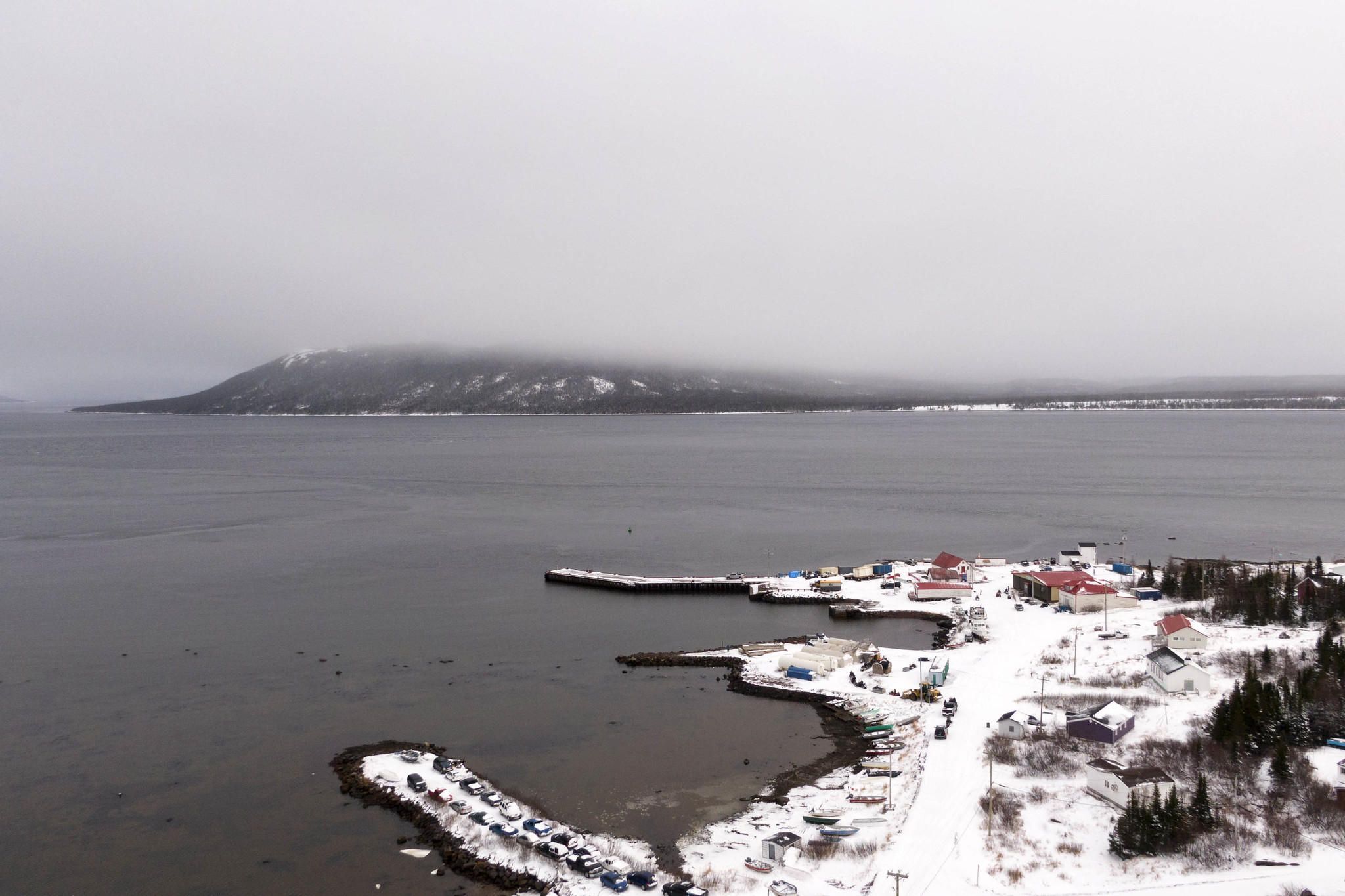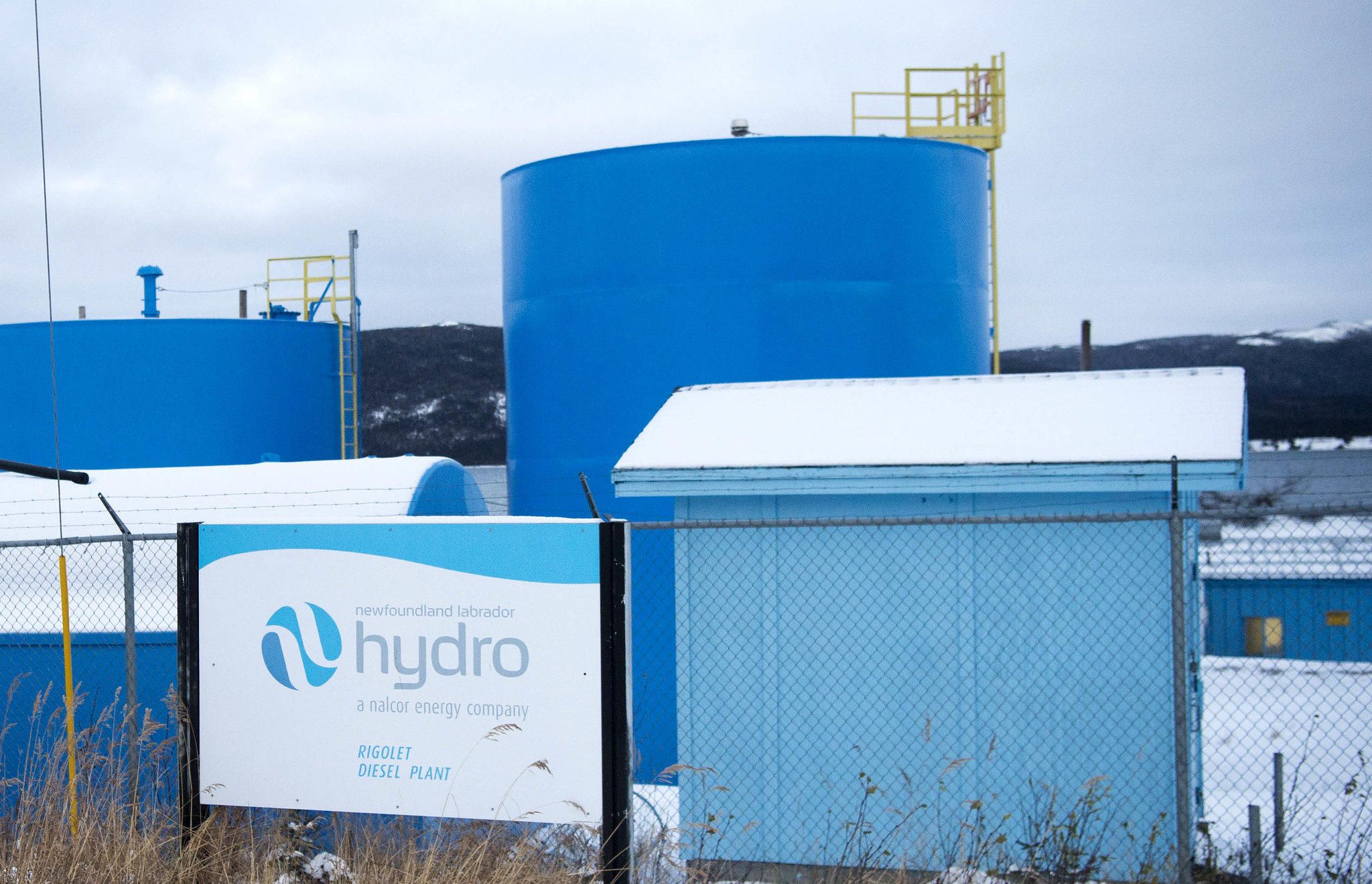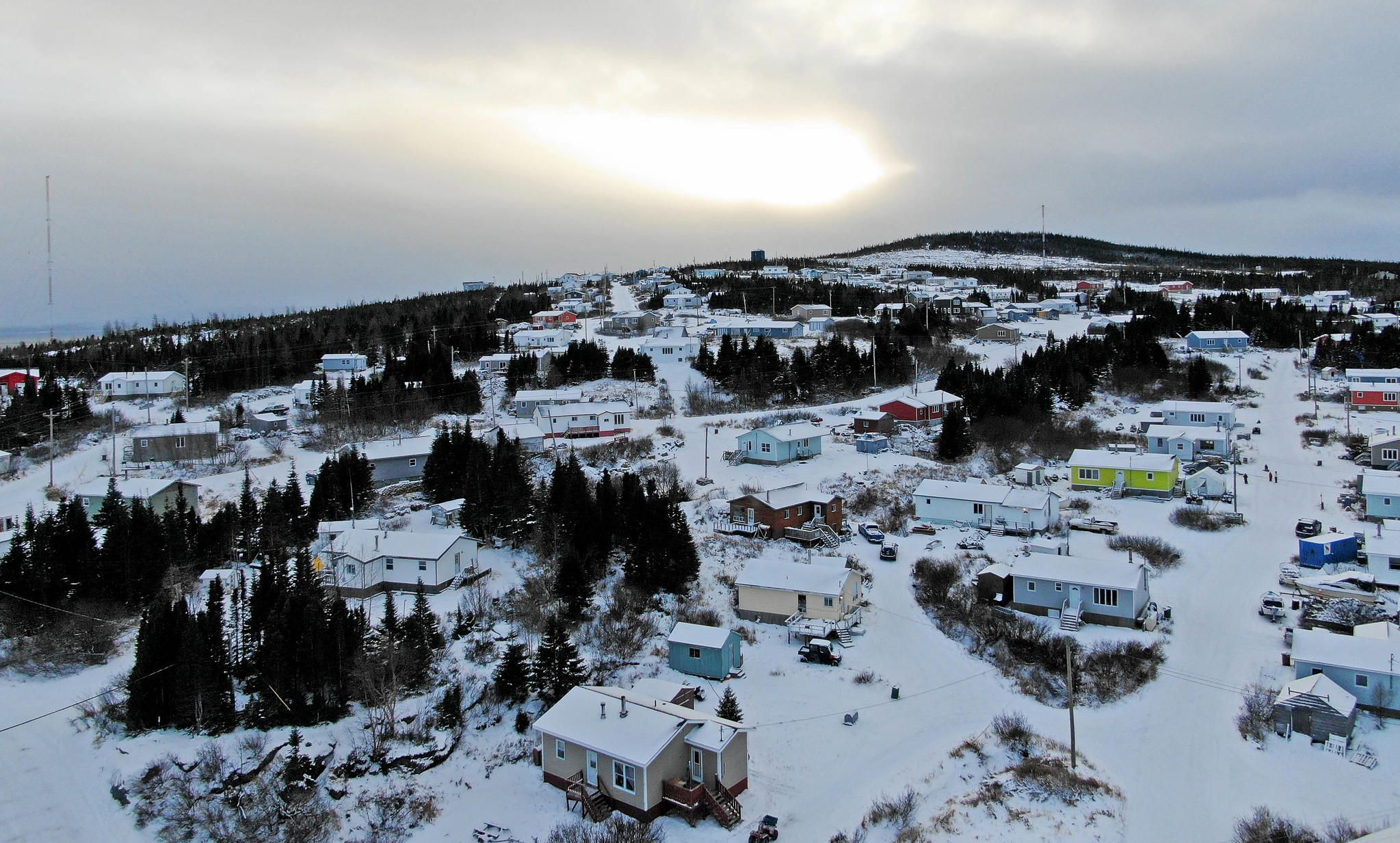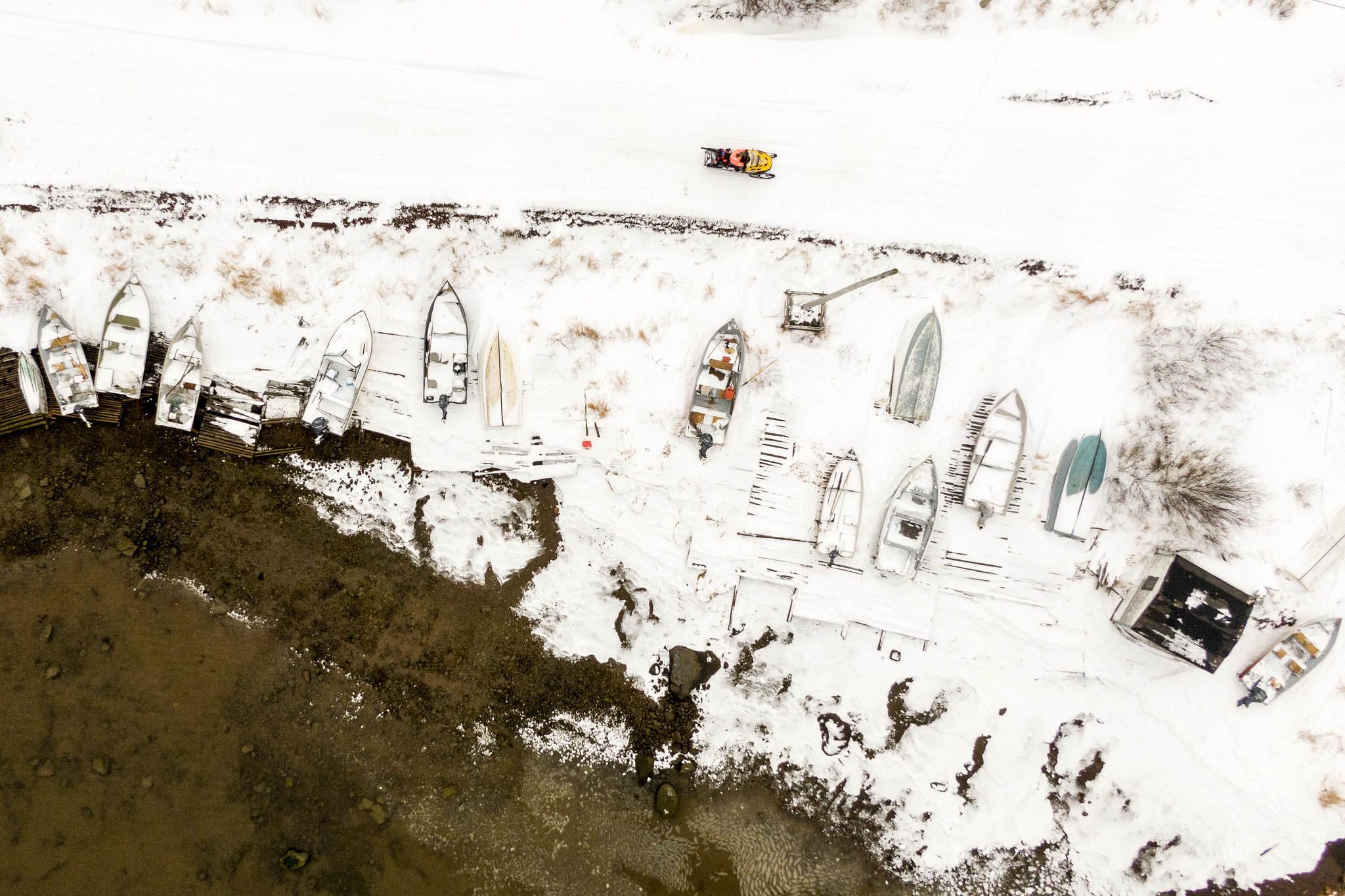When Charlotte Wolfrey was first elected to lead the Inuit community of Rigolet as its AngajukKak, she had that strange mixture of hard-won wisdom and parochial experience that marks generations of Inuit families broken by the forces of colonization and forced acculturation.
Wolfrey knew how to gather eggs from shorebirds, and handle a snowmobile, but she’d never eaten at a hibachi grill. She knew what it was like to be beaten, and forcibly separated from her mother, but she’d never seen an apple tree, or a skyscraper. She knew how to sing traditional songs in her native language, Inuktitut, but she could only pick out the meanings of a few words.
In 2017, Wolfrey got a chance to broaden her horizons in an unexpected way. The United Nations invited her to New York City to attend two weeks of events marking the tenth anniversary of the UN Declaration on the Rights of Indigenous Peoples. They paid for her travel, and she would even have an opportunity to address the UN on matters of importance to indigenous people.
It was the chance of a lifetime for Wolfrey, who had just been arrested for protesting the Muskrat Falls hydroelectricity project.
“I call it genocide,” she said. “It’s going to destroy the Inuit in Rigolet.”
Muskrat Falls is an 824-megawatt hydropower project that was, at that time, in construction on the Churchill River. The river feeds into Rigolet’s watershed, and the protestors were driven by concerns about how the dam — part of a massive Canadian hydropower infrastructure that feeds the New England power grid — would affect their local ecosystem.
Nalcor, the state-owned company behind Muskrat Falls, has commissioned research showing that the project will not have a significant impact on the fish and seals that Rigolet relies upon for food, but the Inuit Nunatsiavut Government disagrees, pointing to Harvard University studies that predict it will dramatically affect the ability of Rigolet residents to eat wild-caught food.
“We’re seal people,” said Wolfrey. “Honest to God, we’re people of the ice and snow. And seals are part of us. It’s just like feeding a baby milk. A baby’s gotta have milk. We’ve gotta have seal.”
Wolfrey, who was used to admiring the northern lights above the icy tundra of her birth, soon found herself jostling for space in the sweltering glitz of Times Square.
“Holy jeezus,” she said. “By the time we got there, it was 12 o’clock at night and it was lit up just like day.”
The lights in Time Square spoke to the endless capacity of Americans to find uses for electricity. The United States is the second-largest consumer of electricity in the world, ranking behind only China, which has four times the population.
And despite the recent political momentum to reduce greenhouse gas emissions, some of the same energy companies that are offering renewables are also actively pushing for more fossil fuels to fill those burgeoning energy needs.
Hydro-Quebec sticks almost exclusively to hydropower. It maintains a few diesel fuel plants — about 500 of its 37,000 total megawatts of generation capacity are diesel — which the company says are needed to meet baseload and peak energy requirements.
But Nalcor is actively pursuing offshore oil and natural gas fields in the Atlantic.
Two years ago, the Hebron oil fields yielded up the first of what is predicted to be up to 150,000 barrels of oil per day, or 700 million barrels total — backed in part by a 4.9 percent partnership with Nalcor.
Nalcor also owns 10 percent of the Hibernia Southern Extension (170 million barrels of oil), and 5 percent of the White Rose Growth Project (300 million barrels), one field of which executives hope will peak at 75,000 barrels of oil per day in 2025.
And that’s only the tip of the iceberg.
“Significant investments have been made to identify, expand, and develop resources,” Nalcor writes on its website. “Newfoundland and Labrador is on the verge of a new era in frontier oil exploration and development.” In all, it predicts it will be able to tap 37.5 billion barrels of oil, and 133 trillion feet of natural gas— equivalent to five years of the total oil and natural gas consumption of the entire United States.
Climate Change
Wolfrey and the handful of Inuit who traveled to New York City with her found that they had a lot of downtime outside of the United Nations conference sessions. With the help of a well-traveled Inuk guide, they tried to experience as much of the city as they could.
Even more so than usual, the city was alive with energy, because massive demonstrations were forming against Donald Trump, who was returning to the city for the first time since his election as president.
While they walked down Fifth Avenue, Wolfrey heard their guide mention street food.
“Street food? Street. Food,” she said “I had never heard of such a thing.”
Her choice of meal from a street vendor turned out to be a disappointment — flabby lo mein noodles, not even really worth eating. But when she spied a garbage can and beelined to throw it away, strong hands pulled her back. The can was on the other side of the street, and she had tried to walk straight into the traffic-filled street.
“I just wasn’t used to traffic lights, and so many cars,” she said.
She found riding as a cab passenger to be stressful.
“They lies on their horns,” she said, pantomiming an irate cab driver leaning his elbow and forearm against the car horn. “They lies on their horns, and they says,” and here she adopted a mockingly masculine Brooklyn accent, ‘Look at dis guy! Look at dis guy!'”
She tried different modes of transport — her friend was dismayed to see that the horse pulling Central Park carriages wore blinders, while Wolfrey felt guilty about the effort put forth by a rickshaw worker in Chinatown.
Most of the time, she walked, but she wasn’t used to the balmy New York climate. Over the course of 10 days, she lost 10 pounds.
“It was last of April to the tenth of May,” she said. “And it was so, so, so, so, hot.”
The heat in New York City, and the global nature of the United Nations, both reminded Wolfrey of the current climate crisis, which has scientists and governments around the world measuring impacts, and working to reduce greenhouse gas emissions.
Wolfrey shares concerns that New England residents have about climate change, which poses disproportionate threats to indigenous populations. But she urged Americans to stop turning to large-scale Canadian hydropower as the solution.
Right now, Canadian hydropower producers and American energy consumers rely on each other.
It is the exported electricity that nets the highest per-watt revenues for Hydro-Quebec (Nalcor’s partner on another Churchill River project), and most of its 2018 exports went to the Northeast, with 27 percent going to New York and another 46 percent going to New England.
And those numbers are only expected to grow, as ambitious renewable energy mandates are adopted by more states like Maine, which recently committed to attaining 80 percent renewable energy in just 10 years.
The relationship between the new Muskrat Falls dam and New England is murky — while it will be tied into the infrastructure that currently supplies New England, most of its capacity will go to communities within Newfoundland and Labrador. But it is part of a larger expansion plan that depends on expanded growth in US markets.
“In our province, once the (Muskrat Falls) generation facility is online, 98 percent of our energy will come from renewable resources, primarily hydro,” said Karen O’Neill, a spokeswoman for Nalcor. “That will shut down our fossil fuel plant. It shuts down coal in Nova Scotia.”
Ironically, the 2 percent who will still receive their power from fossil fuels will mostly be isolated indigenous communities along the coast, which are not hooked up to the grid.
In Rigolet, right across the street from Wolfrey, large Nalcor-owned diesel tanks block the view of the water, and sometimes generate black streams of smoke. She said Rigolet is being polluted by both the diesel, and the Muskrat Falls dam.
O’Neill said the company is looking for solutions to the diesel tanks.
“We are looking at how to supplement those communities with renewables, but that is ongoing,” said O’Neill.
Clean and Green?
Though it is often overshadowed in public debates about renewable energy, dam reservoirs do produce greenhouse gas emissions, as is readily admitted by Hydro-Quebec.
“Impoundment of hydroelectric reservoirs induces decomposition of a small fraction of the flooded biomass (forests, peatlands and other soil types) and an increase in the aquatic wildlife and vegetation in the reservoir,” the company writes on its website. “The result is higher greenhouse gas (GHG) emissions after impoundment, mainly CO2 (carbon dioxide) and a small amount of CH4 (methane).”
Hydro-Quebec maintains that these emissions are small and temporary, peaking within a few years of flooding an area. Over an expected dam lifespan of 100 years, the emissions are barely a blip.
“Hydro is not a zero emissions resource,” said Sean Mahoney, director of the Conservation Law Foundation's Maine Advocacy Center. “We’ve been saying that for years. Hydropower has significant carbon emissions associated with it, particularly depending on the type of project.”
But Mahoney says it’s not enough to know that large scale hydro has some negative environmental and social justice consequences.
“Any large infrastructure project is gonna have a footprint on the face of the earth,” he said. “The way we look at it is, we’ve been doing everything possible to minimize that footprint, and asking ourselves, is the footprint worth the tradeoff?”
That’s the kind of reasoning that drew partial support for a hydropower transmission line through Maine from CLF, and also earned an endorsement from the Union of Concerned Scientists.
And an extensive 2014 study of cradle-to-grave impacts of different energy sources, conducted by the University of Quebec at Montreal at the request of Hydro-Quebec found that Hydro-Quebec’s reservoir-based hydropower facilities had 17 grams of CO2 emissions per kilowatt hour. That is worse than wind (14 grams per kilowatt hour), but better than solar (64), and far better than fossil fuels like liquid natural gas (620) and coal (874).
But other studies have come up with far less rosy comparisons.
Emissions from dams in tropical regions can actually exceed the amount produced by fossil fuels, according to a study published in the September edition of the journal Nature.
And a recent study by environmental scientists at the Environmental Defense Fund says that a 100-year window may not be the best way to measure climate mitigation efforts. Because most of a dam’s emissions happen over the first 20 years of its life, the short-term impact of adding hydropower to the world’s energy profile may not compare favorably to fossil fuels, the study found.
“If minimizing climate impacts are not a priority in the design and construction of new hydropower facilities, it could lead to limited or even no climate benefits” as compared to fossil fuels, they wrote.
Dylan Voorhees is the climate and clean energy director for the Natural Resources Council of Maine, which has emerged as one of the leading voices against CMP’s proposed power line.
“They continue to try to sell this project on ‘green energy and we need to protect the climate,’ but I don’t see them being very persuasive on this point.”
Voorhees says he doesn’t support large scale hydro as a meaningful component of fighting climate change in Maine.
“Should we put our time into that, or put our time into developing renewable energy into Maine where we get more economic benefits from it? Wind and solar have vastly lower impacts than the mega dams in Canada.”
Leaving NYC
As Wolfrey awaited her chance to address the United Nations, she continued to explore New York between sessions.
The types of food on offer were overwhelming. She was amazed by the abundance of fruit — blueberries and raspberries and melons, all of it fresh.
She went to “that famous Japanese place for supper,” where a high-energy white-clad chef threw knives in the air, and made a flaming teepee out of rings of onion before serving her steak and zucchini.
But every day, she found herself circling back to the same place for the same lunch, a smoked salmon bagel.
“It had too much cream cheese on it,” she said. But she kept ordering it. All of the Inuit did. In all the wild abundance of the city, those slices of soft, pink salmon meat were the only food that reminded them of home.
“That was kind of our comfort food, the salmon,” she said.
One day, Wolfrey’s group crossed the Brooklyn Bridge, to get to “that famous pizza place,” but they didn’t make it. The streets were lined with anti-Trump demonstrators, and squads of uniformed police officers. Trump was about to arrive in the city, and would be landing nearby, they heard.
They settled for a different pizza place (which also, it turned out, was famous), but Wolfrey was struck by the scale and tone of the demonstrations. Though she had been arrested herself for civil disobedience, she had been among friends and family, who were supporting each other as they went through the same experiences.
The newspapers and radio waves were full of news of Trump’s hardline stance against immigrants. He had recently floated a travel ban for immigrants from six nations, and it was being argued throughout the court system.
When the time came for Wolfrey to address the United Nations — to speak about the marginalization of the Inuit, and the problems that they were facing — she didn’t take it.
Ultimately, she said, the criminal trespassing charges against her, Trump’s rhetoric, and the highly charged atmosphere in New York City, made her worry about being targeted.
“I didn’t want to bring that attention to myself,” she said. “God knows what he would do to an outspoken Canadian.”
Not until the conference had ended, and Wolfrey was back in Rigolet, did she fully shake the feeling that something could happen to her for speaking her mind.
Speaking from the safety of her living room, in a marginalized community at the edge of the continent, she still speaks against the dam, but less frequently, and in a voice that is roughened by her cancer. Her tone is a bit less urgent, a bit more tinged with the resigned stoicism of living in a world that seems less prepared to listen.
If their wild-caught food is found to have dangerous levels of methylmercury, as is predicted by the Harvard study, Wolfrey doubts that her family will give up the fish and seals that make up such a large part of their culture.
“We’re going to die sometime. We’re not going to stop eating the foods that we love, that keep us healthy and happy,” she said. She took another swig of water. “That makes us Inuit.”







